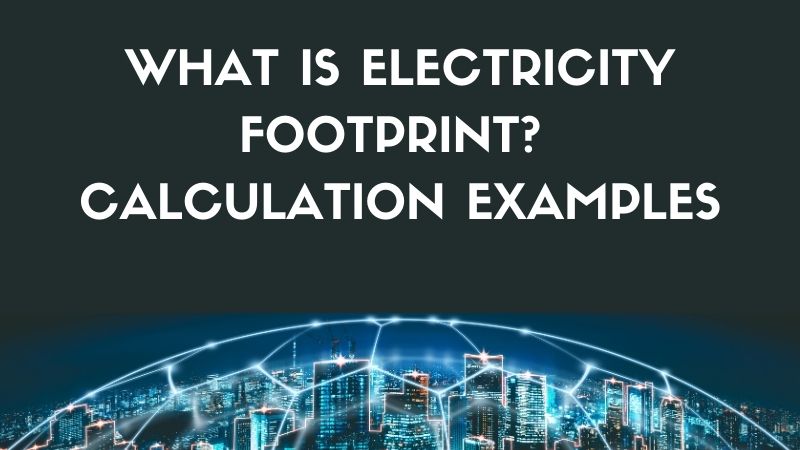
A Electricity Footprint is the total amount of electricity consumption (including Artificial Intelligence ) that are generated by our actions typically measured in kilowatt-hours (kWh). Term of Electricity Footprint was founded by Turkish Scholar Gökhan Turgut Ünal. We make a lot of activities daily and commonly technological activities, AI activities and consumption. In the age of climate change, energy efficiency, and sustainability, the concept of an electricity footprint has become increasingly relevant—particularly in academic, policy, and environmental discussions. But what does this term actually mean, and how is it measured?
How is it Calculated?
1. Electrical Energy Footprint (in kWh):
Electrical Footprint=∑(Power Rating of Device (kW)×Usage Time (hours))\{Electrical Footprint} = \sum (\text{Power Rating of Device(kW)}\times\Usage Time (hours)})
Or, for multiple devices:
Total kWh=∑i=1n(Pi×Ti)\text{Total kWh} = \sum_{i=1}^{n} (P_i \times T_i)
Where:
-
PiP_i: Power consumption of device i (in kilowatts, kW)
-
TiT_i: Time used (in hours)
-
nn: Number of devices
💡 1000 watts = 1 kilowatt
Example: A 100W fan running for 5 hours → 0.1 kW×5=0.5 kWh0.1 \, \{kW} \times 5 = 0.5 \, \text{kWh}
✅ 2. Electrical Carbon Footprint (in kg CO₂):
CO₂ Emissions=Total kWh×Emission Factor\text{CO₂ Emissions} = \text{Total kWh} \times \text{Emission Factor}
Where:
-
Total kWh is from step 1.
-
Emission Factor depends on your country or energy source (how “clean” the electricity is).
Example Emission Factors (approximate):
-
Coal-based grid: ~0.9 kg CO₂ per kWh
-
Natural gas: ~0.4 kg CO₂ per kWh
-
Renewables (wind/solar): ~0.05 kg CO₂ or less
✅ Example Calculation:
Let’s say:
-
You use a 1.5 kW heater for 4 hours per day, for 30 days.
-
Your country’s electricity comes mostly from coal: Emission Factor = 0.9 kg CO₂/kWh
Step 1:
1.5×4×30=180 kWh1.5 \times 4 \times 30 = 180 \, \text{kWh}
Step 2:
180×0.9=162 kg CO₂180 \times 0.9 = 162 \, \text{kg CO₂}
🌱 Electricity Footprint and Carbon Emissions
Electricity consumption alone is just one side of the story. To understand the environmental impact, it’s critical to translate electricity use into carbon emissions:
Carbon Emissions (kg CO₂)=Total kWh×Emission Factor\text{Carbon Emissions (kg CO₂)} = \text{Total kWh} \times \text{Emission Factor}
The emission factor depends on the country’s electricity generation mix. For example:
-
Coal-heavy grids may emit ~0.9 kg CO₂ per kWh
-
Gas-based grids: ~0.4 kg CO₂ per kWh
-
Renewable energy: ~0–0.1 kg CO₂ per kWh
AI and Electricity Footprint
Based on the number of AI-specific computer chips that have been sold (mostly graphics processing units, or GPUs) it’s likely that AI applications only consume about 0.04% of global electricity. That electricity use results in about 0.01% of global greenhouse gas emissions.
Today, the electricity demand from AI-specific applications is estimated to be less than 1% of global electricity use—and likely much lower. To understand this number, it helps to start with the electricity consumed by the 11,000 data centers worldwide, which was about 1.0 to 1.3% of global electricity consumption in 2022. (This excludes another 0.4% from cryptocurrency mining.) However, most of the computation at these data centers is not AI; instead, it’s more conventional applications like e-commerce, video streaming, social media, and online gaming.
The amount of AI-based computation at data centers is hard to determine because there are no good global datasets. Based on the number of AI-specific computer chips that have been sold (mostly graphics processing units, or GPUs) it’s likely that AI applications only consume about 0.04% of global electricity. That electricity use results in about 0.01% of global greenhouse gas emissions.
Still, the demand for AI applications is rapidly growing, and this is likely to drive up the electricity used by data centers and the associated greenhouse gas emissions. The most important implications of this trend are in the US, which hosts about half the world’s data centers. Currently, data centers use about 4% of US electricity, but projections for the future range from a low of 4.6% to a high of 9.1% in 2030.
Electricity Footprint in Academic and Policy Contexts
In academic research, the term “electricity footprint” is often used within:
-
Life Cycle Assessment (LCA)
-
Urban energy models
-
Climate change mitigation strategies
-
Smart grid and energy transition studies
It is frequently accompanied by discussions of the “carbon footprint associated with electricity consumption”, especially in contexts where emissions reduction is a policy target.
Why Does It Matter?
Understanding and reducing electricity footprints is essential for:
-
Mitigating climate change
-
Designing energy-efficient buildings and infrastructure
-
Shaping behavioral change in consumption patterns
-
Guiding public policy on renewable energy and decarbonization
Whether at a household, industrial, or municipal level, lowering our electricity footprint contributes directly to energy sustainability and climate resilience.
Conclusion
In summary, your electricity footprint is a crucial metric in understanding your environmental impact. By tracking how much electricity you use—and where it comes from—you can make more informed decisions that benefit both the planet and your energy budget.
For academic writers, researchers, and policy developers, using clear and standardized terminology such as “electricity footprint” and “carbon emissions from electricity” ensures alignment with global sustainability discourse.